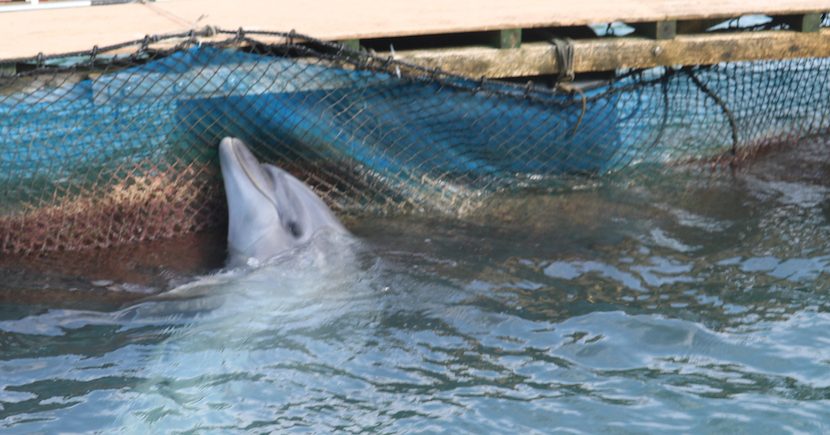For a long time, dolphins have amazed people with their playful behavior, great intelligence, and friendly nature. These charming sea animals have been celebrated in art, stories, and popular media, often shown as good companions to humans in the vast oceans.
However, beneath the shining surface of their water world, there is a darker, hidden side that challenges what we think about dolphins. Beyond their cute smiles and jumping tricks, there is an unseen world of disturbing behaviors and shocking facts that reveal a more complicated, darker side to these mysterious creatures.
Cruel Hunting Behaviors
Despite their charming smiles, dolphins are formidable predators, employing sophisticated hunting techniques to exploit the vulnerabilities of their prey. They have been known to herd schools of fish into tightly packed groups, separating the weaker individuals for an easy kill. Some species, like the killer whale (which is technically a dolphin), engage in brutal hunting strategies, using their immense strength to batter and incapacitate larger prey like seals and even whales.
Moreover, dolphins have been observed engaging in acts of surplus killing, slaughtering more prey than they can consume, seemingly for sport or to assert dominance over their territory.
The dark side of dolphins’ intelligence
While dolphins are hailed for their remarkable intelligence, this very trait can manifest in unsettling ways. Researchers have documented incidents of dolphins exhibiting sadistic behaviors, tormenting and even killing other marine creatures for reasons beyond mere sustenance. Some have been observed engaging in acts of infanticide, drowning or violently separating calves from their mothers.
Dolphins have also been known to exhibit a level of self-awareness and cognitive complexity that can be unsettling. Their ability to recognize themselves in mirrors and engage in deceptive behaviors suggests a depth of consciousness that blurs the line between human and animal intelligence.
Sinister Language
Dolphins are renowned for their intricate communication systems, using a complex array of whistles, clicks, and body language to convey messages. However, some of these vocalizations have been linked to more sinister contexts. Certain calls have been associated with aggressive behaviors, such as rallying for an attack or asserting dominance within a pod.
Additionally, researchers have speculated that dolphins may use their advanced communication abilities to coordinate and plan complex strategies, potentially including acts of aggression or even violence against other species or rival pods.
The Troubled Life in Captivity
The captivity of dolphins has long been a controversial issue, with many experts citing the psychological and physical toll it can take on these intelligent creatures. Confined spaces, lack of stimulation, and separation from their natural social structures have been known to trigger abnormal behaviors, such as self-mutilation, aggression, and even psychosis.


Moreover, the captive breeding programs often employed by marine parks and aquariums have raised ethical concerns regarding the welfare of these animals. Inbreeding, premature deaths, and the separation of calves from their mothers have been documented, leading to calls for reform or even the complete abolition of such practices.
The Dark Side of dolphins’ Social Lives
Dolphin societies are highly stratified, with intricate hierarchies and complex social dynamics. While this level of organization is often celebrated, it can also give rise to darker aspects of behavior. Bullying, ostracization, and even violent conflicts have been observed within dolphin pods, as individuals vie for dominance and resources.
Furthermore, the dark dolphin facts also reveal how they engage in acts of sexual coercion and harassment. with males, using their physical strength and intimidation tactics to force unwanted mating encounters with females.
Final thoughts
As we delve deeper into the enigmatic world of dolphins, it becomes increasingly apparent that these charismatic creatures hold mysteries that challenge our perceptions. While their playful antics and apparent friendliness have captured our hearts, it is essential to acknowledge the darker aspects of their behavior and biology. Only by embracing the complexities of their nature can we truly appreciate the depth of the marine world they inhabit and the profound lessons they have to offer.